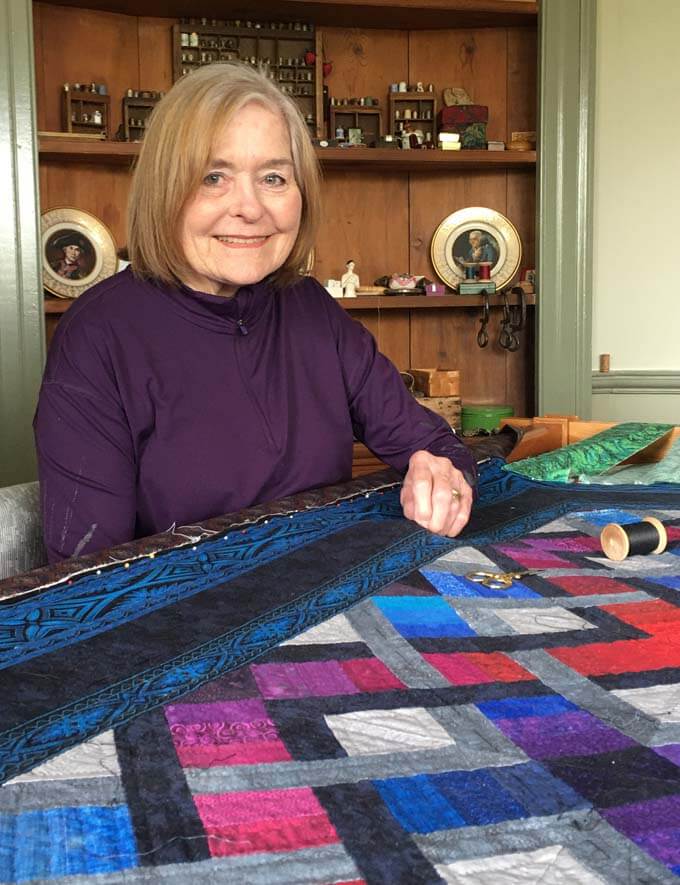
My first quilt was a grandmother’s flower garden made with Indian hand block printed fabrics. It was done with all dark colors. When it came time to quilt it, I went looking for thread. There were no quilting stores in my area in 1972, only quilting areas in other types of handicraft stores. I went into a predominantly needlework shop and asked for navy blue thread for quilting. I was told in no uncertain terms that you never quilt with colored thread. Quilting is done in only cream or white and if you ever used a different color thread and entered a competition, the quilt would be disqualified. I said I had no intention of entering this quilt into a competition and wanted a dark colored thread that would blend with the fabrics I used in the quilt. I knew quilting thread was slightly thicker than standard sewing thread and went to a decorator shop where they recommend using heavier thread for the heavier fabrics. I found a company which made a 40 weight thread that was perfect. It came in a wide variety of colors and I used it for years until it was purchased by another company and the manufacturing of the thread was outsourced to a foreign country. It was no longer the quality it had been.

I have learned a lot of my quilting lessons the hard way. When I was quilting one of my early quilts in 1976, I had chosen a poly-cotton quilting thread in white. It was a patriotic themed quilt designed for the bicentennial celebration. After about two weeks of quilting, I decided to take it out of the frame and check my stitches on the back. Much to my horror, where the quilting was done in straight lines along the grain of the backing fabric, there were small cuts that were made by the thread. The places where the quilting was done on the diagonal were ok. Polyester has a sharpness to it and it is also slightly elastic so if the thread is pulled too tightly it stretches and is even more apt to cut the fabric. I learned it is best to quilt with a thread fiber content that is compatible with the fabric used in the rest of the quilt.
I ended up taking out all the quilting I had done, replaced the backing and started over. Needless to say, that is the last time I used poly-cotton thread for either hand piecing or quilting and use only 100% cotton thread.

What color thread to use. For my early quilts, I used the same color thread throughout but as the years went by, I discovered that I liked using different colors depending on the color of the fabric I was quilting. It is not unusual for me to use three or four different colored threads in one quilt. I find I have certain “neutral” colored threads that blend with the fabrics that I often use such as light tan, grey/blue, dusty rosy red, grey/green, etc.
To wax or not to wax the thread. A lot of people ask this question. Waxing is where the thread is pulled over a piece of beeswax before sewing. I think it is a personal choice but I do not wax it. If a quilting thread is used it is already pre-waxed and my problem with waxing a non-quilting thread is I find that the waxing causes pieces of batting to be pulled out along with the thread, causing a “bearding” effect.
So much of the quilting process from beginning to end comes down to personal choices that we discover, as I have, along the way.

































